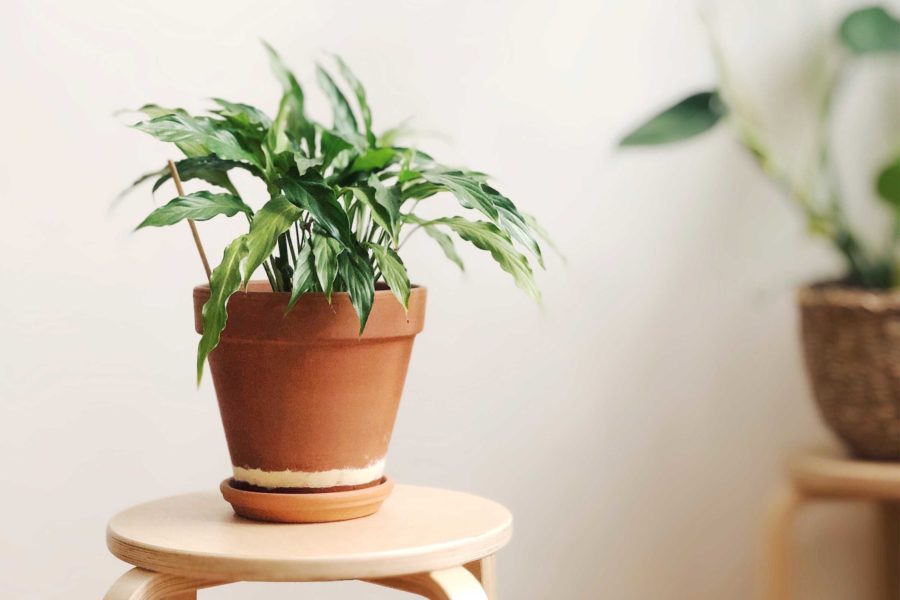Did you try your hand at growing your own outdoor garden this summer? Whether that went well or not, growing plants indoors in a whole new ballgame. And, now that the weather has cooled, it’s potted plant season. Can you keep up your green thumb indoors?
To help you along your way, we consulted with local plant experts.
Jessie Banhazl is the CEO and founder of Green City Growers, a Boston company that provides clients with the infrastructure, tools and education to grow their own plants and gardens. She shares insight on which outdoor plants can be transferred indoors and how to best take care of potted plants at home.
Alex Reisman is director of special projects at Niche, a plant shop with locations in the South End and Cambridge. She also offers workshops and resources for plant lovers, and she enjoys imparting wisdom on air-cleansing plants and the art of repotting your house plants.
Tip 1: Only certain plants can be transferred inside from the outdoors.
One of the best plants that are easy to transfer from your outdoor garden into your home for the winter season are perennial herbs such as rosemary, oregano and thyme, says Banhazl.
“[You] put them on a sunny window sill and they’ll survive through winter,” she says.
What’s less likely to survive an indoor transfer are annual herbs like basil, dill and cilantro, and even less so, fruits and vegetables that need a certain amount of heat and sunlight to survive.
Here’s a pro tip, courtesy of Banhazl: If you want to keep cultivating your perennial herbs year-round, have the foresight to plant them into moveable pots at the beginning of the season so they’re easy to move inside.
If you didn’t originally plant them in pots, you can transplant them by “digging a wide area around the base of the plant and moving it into a pot” with sufficient soil, says Banhazl.
Tip 2: If you’re a new plant owner, start with a low-maintenance plant.
Plants can be extremely fickle depending on type, so if you’ve never taken care of one before, you might be better off starting with the “plants that are easy to take care of, can grow in low to medium light and take little maintenance,” says Banhazl.
According to Reisman, examples of such plants include the pothos plant and the sansevieria plant. Sansevieria is commonly known as the snake plant or mother-in-law tongue. It grows vertically, in spear-like shapes with pointed ends, and is marked by yellow-green stripes. The pothos plant, also known as Devil’s Ivy, can be grown as a hanging plant. It’s heart-shaped leaves grow long and winding, spilling out of its pot.
Banhazl also recommends the spider plant as a good starter house plant. “I’ve had the same plants in four different apartments with different light conditions, so they’re very resilient,” she says.
Contrary to popular belief, cacti and succulents are more finicky, despite not needing to be watered as much.
Tip 3: Be aware of the changing sunlight conditions in your home.
One of the most common challenges for first-time plant owners, and even the more experienced
ones, is making sure your indoor light conditions are on par with the needs of your plant.
Banhazl shares a helpful measurement for determining the amount of light your environment gets: “If you get four or five hours of sunlight in through a window, that puts you in the higher category of light,” she says. This means plants requiring medium to high light can thrive there.
Another common challenge for plant parents is keeping track of the changing sunlight conditions throughout the seasons.
“The sun changes where it is in the sky depending on what time of year it is,” says Banhazl. “So you may have a window that’s super sunny in the fall, but then loses light in the summer or vice versa.”
Not having a consistent light source can be detrimental to certain plants, that’s why opting for plants that can grow in low-light conditions is a full-proof way to combat this.
Or, you can simply change the location of your plant. For example, in the winter, the sun sits lower in the southern sky. “If you’re growing indoors, you want to grow your plants in your south-facing windows, or southwest, or southeast,” says Banhazl.
Tip 4: You may be killing your plant by overwatering it.
Some newbie plant owners might worry that they are not watering their plant enough. Caution: There is such a thing as overwatering!
Telltale signs you are overwatering include parts of the plant looking mushy, seeing moss or other growth in the soil, or a pool of water sitting on top of the soil.
If you’re wondering whether you’re not watering enough, look out for leaves curling, drying, falling off or browning.
Banhazl recommends paying attention to the heat conditions in your environment. In the heat of the summer, plants tend to dry out faster, requiring more water — unless you’re blasting your air conditioner at all times of the day.
Similarly, it gets cold in the winter, but you might keep your home warm and toasty throughout the season, so your plant might need just as much water as it needed in the heat of summer.
“It’s a case by case thing, and you just have to learn your space and learn your plants. Once you get the rhythm going, everyone does well,” says Banhazl.
Tip 5: You may need to repot your plants with fresh soil on an annual basis.
If you’ve been following the right light conditions and water requirements and after a year or so, your plant’s bottom leaves are beginning to dry out, the soil dries out more quickly than usual and you can see the roots coming out of the pot’s drainage holes — it might be time to repot your plant.
“It’s beneficial to observe the plant throughout the year. Typically, it needs to be repotted once a year,” says Reisman.
The best time of year to do this? “During the brighter periods of the year, like the spring, when the days are longer and the plants are growing more quickly,” according to Reisman.
But as always, treat your plants with care because repotting can be a shock to its system if not done correctly.



 5 min read
5 min read



